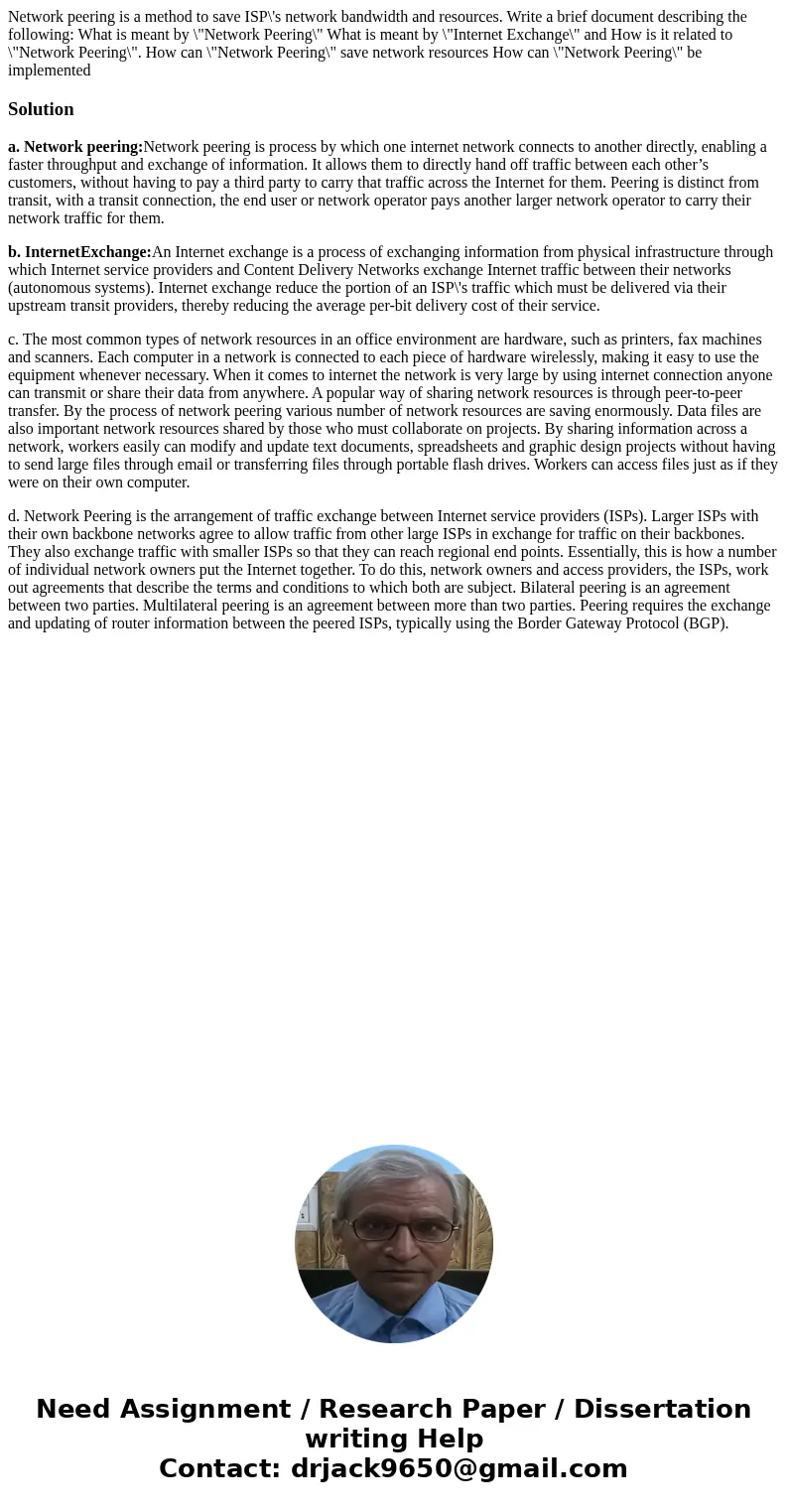Network peering is a method to save ISPs network bandwidth a
Solution
a. Network peering:Network peering is process by which one internet network connects to another directly, enabling a faster throughput and exchange of information. It allows them to directly hand off traffic between each other’s customers, without having to pay a third party to carry that traffic across the Internet for them. Peering is distinct from transit, with a transit connection, the end user or network operator pays another larger network operator to carry their network traffic for them.
b. InternetExchange:An Internet exchange is a process of exchanging information from physical infrastructure through which Internet service providers and Content Delivery Networks exchange Internet traffic between their networks (autonomous systems). Internet exchange reduce the portion of an ISP\'s traffic which must be delivered via their upstream transit providers, thereby reducing the average per-bit delivery cost of their service.
c. The most common types of network resources in an office environment are hardware, such as printers, fax machines and scanners. Each computer in a network is connected to each piece of hardware wirelessly, making it easy to use the equipment whenever necessary. When it comes to internet the network is very large by using internet connection anyone can transmit or share their data from anywhere. A popular way of sharing network resources is through peer-to-peer transfer. By the process of network peering various number of network resources are saving enormously. Data files are also important network resources shared by those who must collaborate on projects. By sharing information across a network, workers easily can modify and update text documents, spreadsheets and graphic design projects without having to send large files through email or transferring files through portable flash drives. Workers can access files just as if they were on their own computer.
d. Network Peering is the arrangement of traffic exchange between Internet service providers (ISPs). Larger ISPs with their own backbone networks agree to allow traffic from other large ISPs in exchange for traffic on their backbones. They also exchange traffic with smaller ISPs so that they can reach regional end points. Essentially, this is how a number of individual network owners put the Internet together. To do this, network owners and access providers, the ISPs, work out agreements that describe the terms and conditions to which both are subject. Bilateral peering is an agreement between two parties. Multilateral peering is an agreement between more than two parties. Peering requires the exchange and updating of router information between the peered ISPs, typically using the Border Gateway Protocol (BGP).

 Homework Sourse
Homework Sourse